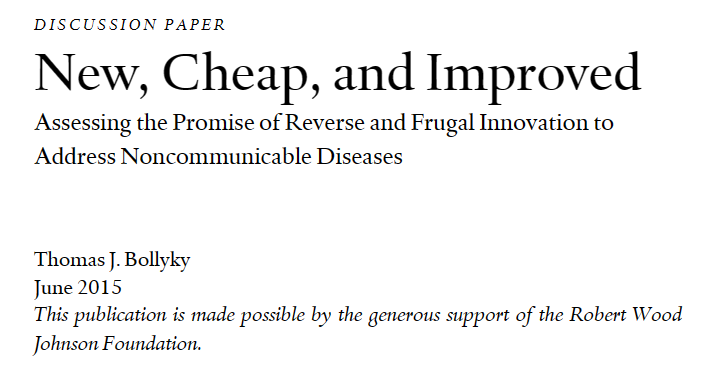New, Cheap, and Improved: Assessing the Promise of Reverse and Frugal Innovation to Address Noncommunicable Diseases
Council for Foreign Relations
06 Jan 2015

The novelty and promise of frugal and reverse innovation is its marriage of the innovation and entrepreneurial energy of large-volume, low-margin business successes of the past with the social objectives and context-driven focus of the appropriate technology movement. To start, frugal innovation has focused on addressing the unmet needs of low-income people, not just the broader public. Frugal and reverse innovations have also generally been employed as commercial strategies with customers, rather than charities with beneficiaries. The possibility that the health needs of the poor will be a sustainable business opportunity—and not an unending humanitarian obligation—is important for attracting investment and aid to ensure those needs are met. As business practices, frugal and reverse innovations have had significant success in low-income customer segments of large emerging economies, particularly India. It remains unclear if that model can be adapted to low-income countries or be used to significantly alter healthcare provision in high-income countries.

